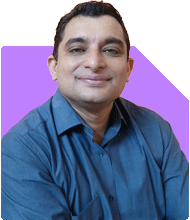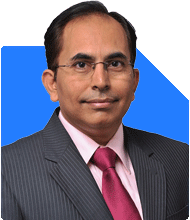Dear sir,
I am running 43. My current investment portfolio is 27 Lakh in PPF, 3 Lakh in Mutual Funds with investment in 8 mutual fund with 1000 sip every month for each funds. Approx 10 lakh of gold, 5 lakhs in savings and 8 lakhs in stocks.
I am yet to start a family and intend to have 2 kids if not atleast 1 as of now.
My current salary is approx 80,000 a month.
Kindly help me in guidance if my investment portfolio is right and what are other options where I can invest now on.
I have my own house and EMI is 8000 every month.
I also intend to buy new home worth 1 Cr approx.
I have no fix plans to retire at 60 but would like to have monthly interest income of 1 lakh per month in next 18 years.
So kindly guide me.
Thank you,
Ans: Congratulations on maintaining a well-rounded investment portfolio at 43. Your diverse investments in PPF, mutual funds, gold, savings, and stocks are commendable. Your steady salary, owning a home, and planning for the future show a solid foundation for financial stability. Let’s analyze your current portfolio, identify potential improvements, and suggest strategies to achieve your financial goals.
Assessing Your Current Investment Portfolio
Public Provident Fund (PPF)
Your PPF investment of Rs 27 lakhs is a strong, secure component of your portfolio. PPF offers tax-free returns and safety, making it a reliable long-term investment. Continue contributing to maximize the benefits of compound interest and tax advantages.
Mutual Funds
You have Rs 3 lakhs in mutual funds, investing Rs 1,000 per month in each of 8 different funds. Diversification is good, but having too many funds with small SIP amounts may dilute returns. Consider consolidating into fewer, well-performing funds to optimize growth. Actively managed funds can provide better returns compared to index funds.
Actively Managed Funds vs. Index Funds
Actively managed funds are overseen by professional managers aiming to outperform the market. Despite higher fees, they often yield better long-term returns. Index funds, on the other hand, replicate market indices and offer average returns. For your goals, actively managed funds are more suitable.
Regular Funds vs. Direct Funds
Investing through regular funds involves a commission for mutual fund distributors (MFDs). The expertise of a Certified Financial Planner (CFP) ensures better fund selection and management. Direct funds save on commission but lack professional oversight. Regular funds offer better-managed investments, making them a wise choice.
Gold
Your gold investment of Rs 10 lakhs is a good hedge against inflation and economic uncertainty. Gold provides stability and can be a safe store of value. Consider allocating a portion of your investment to sovereign gold bonds or gold ETFs for better returns and safety.
Savings
Having Rs 5 lakhs in savings provides liquidity and security. Ensure this fund is easily accessible for emergencies. Consider moving a portion to a high-interest savings account or liquid mutual funds for better returns while maintaining liquidity.
Stocks
An Rs 8 lakh investment in stocks indicates a willingness to take higher risks for higher returns. Continue monitoring your stock portfolio and consider diversifying across sectors to manage risk better. Avoid excessive concentration in a single stock or sector.
Financial Goals and Future Planning
Monthly Interest Income Goal
You aim to have a monthly interest income of Rs 1 lakh in 18 years. This translates to Rs 12 lakhs annually. To achieve this, you need a well-diversified portfolio generating sufficient returns while preserving capital.
Strategies for Achieving Financial Goals
Increase Mutual Fund SIPs
Increase your SIP contributions in mutual funds. Focus on a mix of equity and debt funds to balance risk and return. Equity funds provide growth potential, while debt funds offer stability.
Review and Consolidate Mutual Funds
Review your current mutual funds and consolidate them into fewer, high-performing funds. This ensures better management and potential for higher returns. Actively managed funds can be a good choice for achieving higher growth.
National Pension System (NPS)
Consider investing in the National Pension System (NPS). It offers tax benefits and a mix of equity, debt, and government securities. NPS can provide a steady income post-retirement, complementing your other investments.
Systematic Withdrawal Plan (SWP)
Set up a Systematic Withdrawal Plan (SWP) from mutual funds to generate regular income. SWPs provide flexibility and potential for capital appreciation. This can be an effective way to achieve your monthly income goal in retirement.
Diversification for Stability and Growth
Debt Mutual Funds
Include debt mutual funds in your portfolio. They provide stability and regular income with lower risk compared to equity funds. Debt funds suit medium-term goals and act as a buffer against market volatility.
Equity Mutual Funds
Allocate a significant portion of your portfolio to equity mutual funds. They offer high growth potential, crucial for building a retirement corpus. Focus on funds with a good track record and consistent performance.
Insurance: Protection First
Life Insurance
Ensure you have adequate life insurance coverage to protect your family's financial future. Avoid investment-cum-insurance policies like ULIPs, LIC endowment plans, as they offer lower returns and inadequate insurance cover. Consider surrendering such policies and reinvesting the proceeds in mutual funds.
Health Insurance
Adequate health insurance is crucial. Review your existing health coverage and consider increasing it if necessary. Medical expenses can be substantial, and comprehensive health insurance will protect your savings.
Emergency Fund: The Safety Net
Maintain an emergency fund equivalent to 6-12 months of expenses. This fund should be easily accessible and kept in a high-interest savings account or liquid mutual fund. An emergency fund provides financial security against unforeseen expenses.
Saving for a New Home
You plan to buy a new home worth Rs 1 crore. Estimate the down payment and loan amount. Save for the down payment through a mix of fixed deposits, debt funds, and balanced funds. Ensure your EMI is manageable within your monthly budget.
Tax Planning
Efficient tax planning maximizes your disposable income. Utilize available deductions under Section 80C, 80D, and others. Your contributions to PPF, NPS, and mutual funds (ELSS) help in tax savings while building your corpus.
Reviewing and Rebalancing Your Portfolio
Regularly review your portfolio’s performance. Market conditions and personal goals change over time. Rebalance your investments to maintain the desired asset allocation. A CFP can provide valuable insights and adjustments.
Financial Discipline and Continuous Learning
Maintaining financial discipline is key to achieving your goals. Automate your investments to ensure consistency. Stay informed about financial markets and new investment opportunities. Financial literacy empowers better decision-making.
Seeking Professional Guidance
A CFP provides personalized advice aligned with your goals. Their expertise in financial planning ensures optimal investment strategies, tax efficiency, and risk management. Regular consultations help in adapting to changing circumstances and market conditions.
Conclusion
Your current investment portfolio is strong, but there are areas for improvement. Diversify your investments, increase SIP contributions, and focus on achieving your long-term goals. With careful planning and disciplined investing, you can achieve a secure financial future.
Invest wisely, stay disciplined, and enjoy a secure financial future.
Best Regards,
K. Ramalingam, MBA, CFP,
Chief Financial Planner,
www.holisticinvestment.in





























